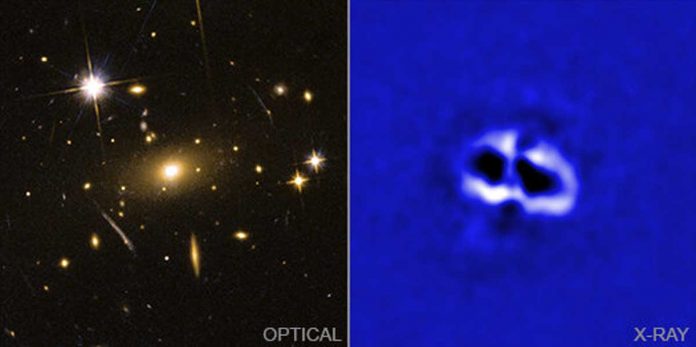By using NASA’s Chandra X-ray Observatory, scientists have found four enormous cavities at the centre of a galaxy. Researchers are suspecting this phenomenon may have been caused by eruptions from two supermassive black holes which were orbiting each other.
The largest structures in the universe are Galaxy clusters and these clusters is a mixture of thousands of individual galaxies, hot gas and unknown dark matters. The hot gas contains most of the mass and it glows brightly that Chandra has detected. The galaxy is situated at the centre of a cluster.
Chandra has studied RBS 797 galaxy cluster which is 3.9 billion light-years from Earth. Chandra finds two separate pairs of cavities in the centre of the cluster.
Scientists think that these cavities are the result of eruptions from regions near a supermassive black hole. After the matters flies away from the black hole, the cavities are blown into the hot gas. Chandra revealed that RBS 797 have two sets of jets.
Previously astronomers have observed the cavities in the east-west direction in RBS 797. But the cavities in the north-south direction have been found recently. The National Science Foundation’s scientists Karl G. Jansky has observed the two pairs of jets by using the Very Large Array.
The researchers also think RBS 797 contains a pair of supermassive black holes which probably have launched the jets in perpendicular directions even at the same time.
The researchers said supermassive black holes created binary systems. Previously, the European VLBI Network has done a radio observation and discovered that the distance between two radio point sources of RBS 797 is 250 light-years. The scientists are assuming they are the closest pair of black holes. The two black holes continuously spiral towards each other. This creates extreme gravitational force. This can be a possible explanation for the presence of four cavities in RBS 797.

